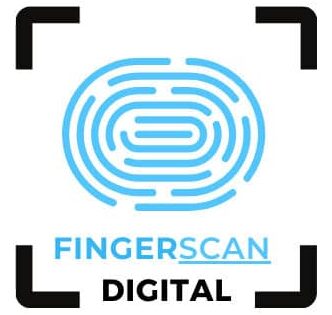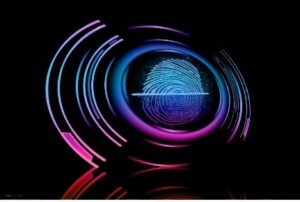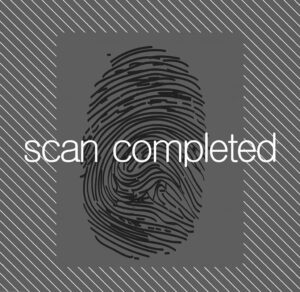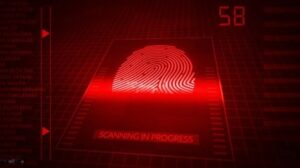In the realm of modern identity verification and law enforcement practices, Livescan fingerprinting has emerged as a pioneering technology. This touchless method has revolutionized the way fingerprints are captured, enhancing accuracy, security, and efficiency in various fields, from background checks to immigration processes. In this comprehensive guide, we’ll take you through the ins and outs of mastering Livescan fingerprinting in 2025.
Step 1: Understanding Livescan Fingerprinting
Before delving into the technicalities, it’s essential to grasp the fundamental concept of Livescan fingerprinting. Unlike traditional ink and paper methods, Livescan involves digitally capturing fingerprints using a specialized scanner. This method offers several advantages, including reduced margin for errors, faster processing times, and the ability to transmit fingerprints electronically.
Step 2: Preparing for Livescan Fingerprinting
Preparation is key to a successful Livescan fingerprinting experience. Start by researching the authorized Livescan service providers in your area. These are usually found at law enforcement agencies, authorized private companies, or government offices. Contact them to schedule an appointment, and inquire about any specific requirements or documents you need to bring along.
Step 3: Documentation and Identification
On the day of your appointment, ensure you have the necessary documentation and identification. These may include a valid photo ID, any required application forms, and payment for the processing fee. It’s advisable to arrive a bit early to complete any paperwork and avoid rushing.
Step 4: The Livescan Fingerprinting Process
Once your documentation is in order, you’ll proceed to the Livescan fingerprinting process. An operator at the facility will guide you through the process, ensuring your comfort and understanding. Your fingers will be digitally scanned using the Livescan device, capturing high-resolution images of your fingerprints.
Step 5: Quality Control and Review
After the scanning is complete, the operator will assess the quality of the captured images. If any images are unclear or distorted, they may ask you to rescan those specific fingers. Ensuring high-quality images is crucial for accurate identification and processing.
Step 6: Submission and Processing
Once the images are satisfactory, they are electronically submitted to the appropriate authorities or databases for processing. Digital transmission expedites the process, reducing the time required for manual data entry and transportation.
Step 7: Results and Next Steps
Depending on the purpose of the Livescan fingerprinting, results and next steps will vary. If it’s part of a background check, for example, you may receive notifications regarding the status of your application or any additional steps required.
Step 8: Embracing the Benefits
Mastering Livescan fingerprinting opens doors to numerous benefits. Faster processing times mean quicker results, making it a preferred choice for urgent applications. The accuracy of digital scanning minimizes errors, reducing the likelihood of discrepancies or delays.
In conclusion, Livescan fingerprinting has paved the way for a more efficient and accurate method of identity verification. By following this step-by-step guide, you can confidently navigate the process in 2023 and beyond. Whether you’re applying for a job, seeking a security clearance, or going through immigration procedures, embracing Livescan technology ensures a seamless experience in the digital age.
Advanced Tips and Considerations for Optimal Livescan Fingerprinting
Now that you have a solid foundation in the basics of Livescan fingerprinting, let’s explore some advanced tips and considerations to ensure you’re getting the most out of this cutting-edge technology.
Tip 1: Prepare Properly
Beyond the initial documentation and identification, it’s essential to physically prepare for Livescan fingerprinting. Ensure your hands are clean and dry to prevent smudging or blurred images. Avoid applying lotions, oils, or creams beforehand, as these substances can impact the quality of the scanned fingerprints.
Tip 2: Dress Comfortably
Wearing clothes that allow you to easily roll up your sleeves or expose your fingers will make the scanning process smoother. This minimizes the risk of any accidental smudging or discomfort during the scan.
Tip 3: Communication with the Operator
Maintain open communication with the operator throughout the process. If you have any concerns or questions, don’t hesitate to ask. They are there to assist you and ensure a successful fingerprinting session.
Tip 4: Verify Authorized Locations
When selecting a Livescan service provider, double-check their authorization status. Using an authorized facility guarantees that your fingerprints will be accepted by relevant agencies and databases, avoiding any potential rejections due to unauthorized sources.
Tip 5: Keep Records
After completing the Livescan fingerprinting process, it’s wise to keep a record of the transaction, including any receipts, confirmation numbers, or appointment details. These records can be valuable if you need to track the progress of your application or provide proof of compliance.
Consideration 1: Privacy and Security
Livescan fingerprinting involves sharing sensitive personal information, so it’s natural to be concerned about privacy and security. Authorized facilities adhere to strict data protection regulations to safeguard your information. It’s always a good practice to inquire about their data handling and retention policies.
Consideration 2: Legal Implications
Understanding the legal implications of Livescan fingerprinting is crucial. Different jurisdictions may have varying laws and regulations regarding fingerprint collection, storage, and usage. Research the laws in your region to ensure you are well-informed.
Consideration 3: Application-Specific Requirements
Keep in mind that different applications may have specific requirements for Livescan fingerprinting. For example, if you’re applying for a professional license, security clearance, or immigration status, there might be additional forms or documentation needed. Thoroughly review the application guidelines before your appointment.
By incorporating these advanced tips and considerations, you can approach Livescan fingerprinting with confidence and optimize your experience. This touchless method has undoubtedly redefined identity verification, and with your newfound knowledge, you’ll be well-equipped to navigate the process seamlessly and efficiently.
The Future of Livescan Fingerprinting: Trends and Innovations
As technology continues to advance at an astonishing pace, Livescan fingerprinting is not immune to evolution. In this final part of our guide, let’s explore some of the exciting trends and innovations shaping the future of Livescan fingerprinting in 2023 and beyond. Read more about Livescan fingerprinting
Trend 1: Biometric Integration
Livescan fingerprinting is just one piece of the biometric puzzle. In the near future, we can expect to see more integration of various biometric modalities, such as facial recognition and iris scanning, to create a comprehensive identity verification system. This multi-modal approach enhances security and accuracy by combining multiple unique identifiers.
Trend 2: Mobile Livescan Solutions
The rise of mobile technology has prompted the development of portable Livescan devices. These handheld scanners allow law enforcement officers, immigration officials, and other professionals to capture fingerprints on the go. This convenience eliminates the need for individuals to visit a specific facility for fingerprinting, streamlining the process further.
Trend 3: AI-Driven Analysis
Artificial intelligence (AI) is revolutionizing data analysis in numerous fields, and Livescan fingerprinting is no exception. AI algorithms can analyze fingerprint patterns, identify anomalies, and even predict potential matches more accurately than ever before. This integration of AI enhances the speed and precision of fingerprint comparisons, making the process even more efficient.
Trend 4: Enhanced Data Security
With the growing concern over data breaches and identity theft, data security is paramount. Future Livescan systems will likely incorporate advanced encryption and secure data transmission protocols to ensure that the captured fingerprint data remains confidential and protected from unauthorized access.
Trend 5: Cloud-Based Storage and Retrieval
Cloud technology has transformed how we store and access data. Livescan fingerprinting could leverage the cloud to securely store fingerprint records, allowing authorized agencies to retrieve them quickly and easily. This eliminates the need for physical storage and enables seamless sharing of information across jurisdictions.
Innovation 1: DNA Fingerprinting Integration
While not traditional fingerprinting, the integration of DNA analysis into the Livescan process holds promise for the future. This could provide an even more accurate and comprehensive method of identifying individuals, particularly in cases where traditional fingerprint patterns are not accessible.
Innovation 2: Continuous Authentication
Imagine a world where your identity is verified continuously without the need for repeated fingerprint scans. This concept is becoming a reality with continuous authentication systems that monitor various biometric signals, such as fingerprints, heart rate, and facial features, to ensure that the person using a device remains the authorized user.
Innovation 3: Contactless Fingerprinting
Building on the touchless nature of Livescan, researchers are exploring ways to capture fingerprints without any physical contact. This innovation could be particularly valuable in situations where hygiene and cleanliness are critical, such as in healthcare settings.
Embracing the Benefits:
Livescan Fingerprinting for a Secure Tomorrow
In our final installment, let’s dive into the broader implications of Livescan fingerprinting for society, the economy, and personal security. As you’ve learned, this technology offers much more than efficient identity verification – it holds the potential to shape a more secure and interconnected world.
Enhanced Public Safety
Livescan fingerprinting plays a crucial role in enhancing public safety. Law enforcement agencies can swiftly and accurately identify individuals with criminal records, aiding in investigations and reducing potential threats. This technology helps ensure that those who hold positions of trust, such as teachers, healthcare professionals, and government employees, are thoroughly vetted and safe to work with vulnerable populations.
Efficiency in Immigration and Travel
For governments, immigration agencies, and international travelers, Livescan fingerprinting streamlines the identification process. It helps verify identities during visa applications, border crossings, and immigration procedures, facilitating smoother and faster movements across borders. This contributes to both national security and global mobility.
Secure Digital Transactions
As our lives become increasingly digital, ensuring secure online transactions is paramount. Livescan fingerprinting can serve as a secure biometric authentication method, adding an extra layer of protection to financial transactions, digital accounts, and sensitive data. This helps combat identity theft and unauthorized access, giving individuals greater peace of mind.
Humanitarian Aid and Disaster Relief
In times of crisis, such as natural disasters or humanitarian crises, rapid identification of individuals is essential for effective relief efforts. Livescan fingerprinting can assist aid organizations in quickly registering displaced individuals, reuniting families, and providing necessary resources to those in need.
Closing Thoughts
Livescan fingerprinting is more than just a technological advancement; it’s a tool that has the potential to shape the future of identity verification and security. From its inception to the current innovations and future trends, we’ve explored the journey of Livescan fingerprinting in this comprehensive guide.
As you navigate this digital landscape, remember that technology is a tool for positive change. Embracing Livescan fingerprinting means embracing a more secure, efficient, and interconnected world. Whether you’re an individual seeking employment, a law enforcement professional ensuring public safety, or a traveler crossing international borders, Livescan fingerprinting is a testament to the power of innovation in safeguarding identities and fostering trust.
Stay informed, stay curious, and stay secure as you embark on this exciting journey through the world of Livescan fingerprinting. By understanding its capabilities, staying attuned to advancements, and recognizing its implications, you’re contributing to a safer tomorrow for yourself and countless others.
Read more blogs here





